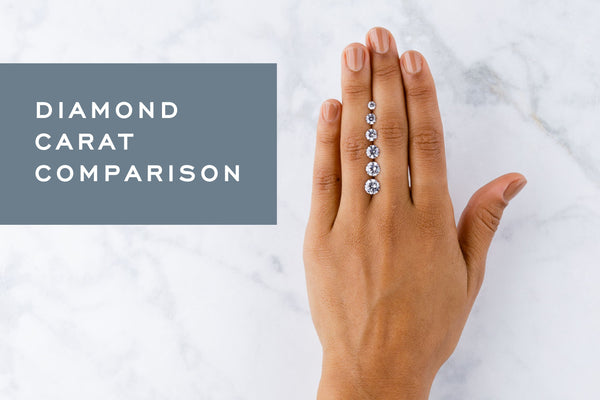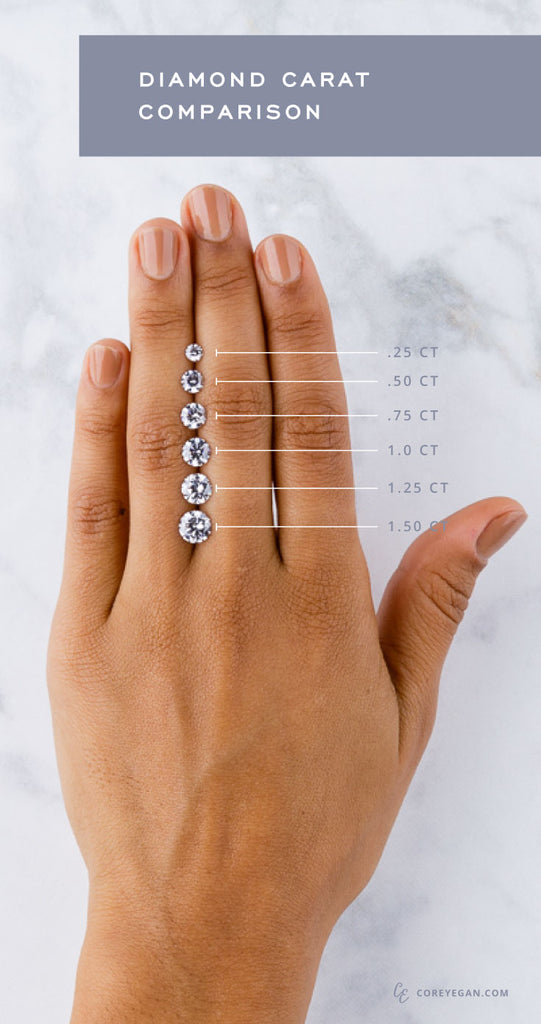Carat Comparison

I'd like to kick off our discussion about diamond sizes by shattering a big myth once and for all:
Bigger is not always better.
(Phew! It feels so good to say that!)
One factor of choosing a diamond will certainly be your visual preference. But the truth is, it’s okay to consider other factors such as your budget, your lifestyle, and your values.
If you have an active lifestyle and find yourself using your hands often, it might not be practical to wear a huge diamond everyday. If your personal style is tailored and minimal, you might lean toward a less conspicuous gem. And many of us millennials (yes, I'm a millennial) are choosing to budget for experiences rather than possessions. So they’re opting for smaller diamonds — or none at all!
I believe that the jewelry you wear should be an expression of your personality and values. I’m all for choosing what feels right in your heart and ignoring the tired adage of how many months salary to spend.
If you’re heading to market to purchase a diamond of any size, you may need a refresher of what those measurements translate to in real life. Since gems are three-dimensional objects, we quantify their size in a unit of weight, rather than trying to compare measurements of their length, width, and depth.
Diamonds and other gemstones are measured in a unit of weight known as a carat. One carat is equal to 200 milligrams.
The image below shares common round diamond sizes, from .25 carat up to 1.5 carats, on a real hand for scale.
 This “visual” size for a 1 carat diamond will vary based on which diamond shape you choose. For instance, an elongated cut like an oval or marquise shape will have more surface area on top, since they are longer in length and width but shallow in depth, than a round or princess cut diamond which are more evenly proportioned.
This “visual” size for a 1 carat diamond will vary based on which diamond shape you choose. For instance, an elongated cut like an oval or marquise shape will have more surface area on top, since they are longer in length and width but shallow in depth, than a round or princess cut diamond which are more evenly proportioned.
The relationship of carat weight to dimensions also varies between types of gemstones. Each type of gem is composed of different proportions of elements, and therefore will have different densities. So when you are comparing two different kinds of gemstones of exact same dimensions, the carat weight will be heavier if it’s a denser gemstone such as a sapphire, than it will in a less dense gemstone like an aquamarine.
Other factors to consider when choosing your diamond will include the color, clarity, and cut (polish & symmetry). Each of these will have their own effect on the diamond’s appearance and price.




